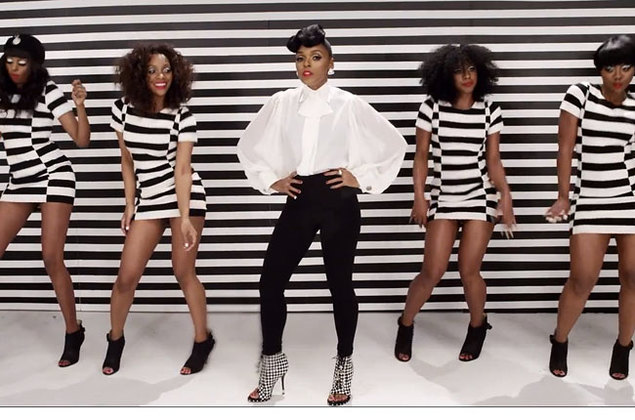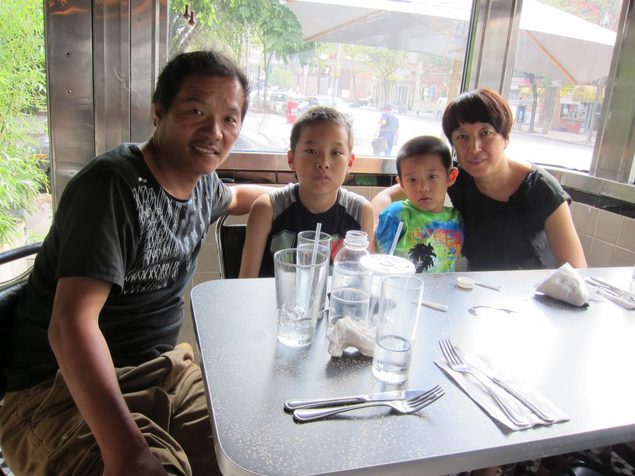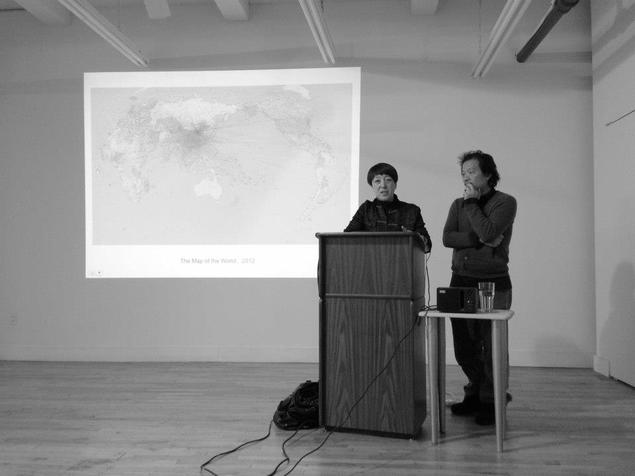
Last night I watched a “feminist” parody of Robin Thicke’s video for Blurred Lines – a song which he performed at the VMAs with Miley Cyrus. A lot has been going around the web-o-sphere about their performances, which also included Kendrick Lamar, 2 Chainz, as well as a host of dancers from the Give it 2 U video. Every angle you could imagine, (and some you couldn’t,) has been spun off the VMAs – from Thicke’s mom shaming Cyrus, to a more elaborate criticism of Miley on a racial level for gesturing lewdly at another woman’s TWERK-machine.
But as the media avalanche has kept on going, I gave the whole thing some thought. Thicke was certainly less criticized – blown off as an obvious male chauvinist, or defended as a “married man,” while Miley got the brunt of the critique from those who still want to see her as a little girl, or were offended by her using another strand of culture to break into adulthood. But I tend to think of performers as merely that – performing reflections of our culture, whether it is really them, or whether we like it, or not.
After running through each of the artists’ videos again, I realized that both Thicke and Cyrus’ had been directed by the same person, and a woman at that. Diane Martel has directed a host of music videos dating all the way back to Mariah Carey’s Dreamlover.

Martel commented on the chauvanist interpretation of Blurred Lines, “I respect women who are watching out for negative images in pop culture and who find the nudity offensive, but I find [the video] meta and playful.” She cites her main inspiration as coming from Helmut Newton who, she claims, depicted women as taking the sexual power from men, for themselves. Martel directed the female performers to look directly into the camera as an assertion of that power.
 After brushing up on Newton, a lauded fashion photographer and artist, I realized that he does often push men to the periphery in exchange for a strong female subject. However, Newton’s photography tends toward the surreal and abstract – something also evident in Miley’s We Can’t Stop video – with illusions to contemporary art such as Maurizio Cattelan’s severed fingers, (featured in his Toiletpaper Magazine and on a billboard in the NYC Chelsea art district.)
After brushing up on Newton, a lauded fashion photographer and artist, I realized that he does often push men to the periphery in exchange for a strong female subject. However, Newton’s photography tends toward the surreal and abstract – something also evident in Miley’s We Can’t Stop video – with illusions to contemporary art such as Maurizio Cattelan’s severed fingers, (featured in his Toiletpaper Magazine and on a billboard in the NYC Chelsea art district.)

Although, I might be able to “get” what Diane is going for here, I have to say that I do not think it trumps the concern over Miley’s approach to race, and it also doesn’t mean that Miley or Robin are truly party to her creative high-ground.
Here is what Thicke had to say about Blurred Lines, “People say, “Hey, do you think this is degrading to women?” I’m like, “Of course it is. What a pleasure it is to degrade a woman. I’ve never gotten to do that before. I’ve always respected women.” So we just wanted to turn it over on its head and make people go, “Women and their bodies are beautiful. Men are always gonna want to follow them around.” What a nice “break” he is getting from being such a nice guy!
And Cyrus’ response to the criticism of her VMA performance, “What’s amazing is I think now, we’re three days later and people are still talking about it. They’re over thinking it,” she says. “You’re thinking about it more than I thought about it when I did it. Like, I didn’t even think about it ’cause that’s just me.” So, because she hasn’t considered her actions – she gets more famous… that sounds about right.

In conclusion, in popular culture we’ve constructed these complex systems around celebrities – they employ dancers, costumers, directors, and PR agents. Not all of those people supporting a “star” will be represented in the end result. Not all of the collaborators will be on the same page, have the same goals, or views. The end result might be a great work of art, it might be a scandal, or it might be totally forgettable.
Both Thicke and Cyrus used props in their performance from videos directed by Martel, but I do not think it was a true artistic extension of those projects. That is because they are not the artists – they have employed artists, and were not able to maintain the artistic vision through a live performance.
The VMA’s this year did nothing for me in terms of “making history,” (as Miley claims,) but I am willing to let that go. I am also willing to let Miley’s childhood go, to let Thicke’s immaturity go, and just hope that we can stop reacting with equal and opposite judgement for those who get it wrong. Instead, let’s appreciate the ones who get it right. For example, the winner of the VMA award for Best Art Direction, Janelle Monae, for Q.U.E.E.N. ft. Erykah Badu.
Please comment if you can think of a pop star who has real artistic vision.




















 After brushing up on Newton, a lauded fashion photographer and artist, I realized that he does often push men to the periphery in exchange for a strong female subject. However, Newton’s photography tends toward the surreal and abstract – something also evident in Miley’s
After brushing up on Newton, a lauded fashion photographer and artist, I realized that he does often push men to the periphery in exchange for a strong female subject. However, Newton’s photography tends toward the surreal and abstract – something also evident in Miley’s 


 If the mark of a life well lived is a perpetual sense of adventure, then Rebecca lives well. If the mark of a talented artist is a propelling force towards new projects, and interesting forums in which to present such work, then yet again, she fits the bill.
If the mark of a life well lived is a perpetual sense of adventure, then Rebecca lives well. If the mark of a talented artist is a propelling force towards new projects, and interesting forums in which to present such work, then yet again, she fits the bill. PLETHORA is a collaborative performance work
PLETHORA is a collaborative performance work